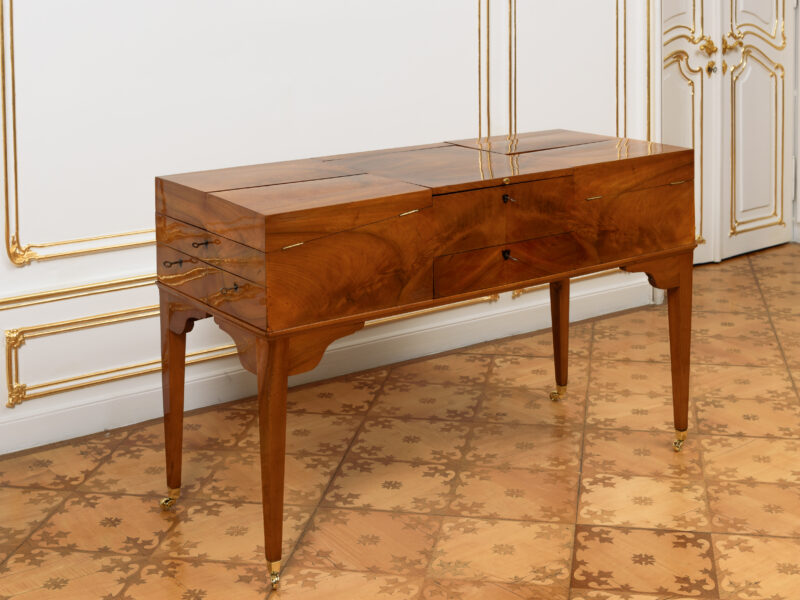
Large Convertible Desk or Vanity Table
This extraordinary table is finely made in walnut and walnut veneer on soft wood. The veneer is beautifully trailing with its stunning pattern, and executed in mirrored form.
The rectengular main part is raised on four square, tapering legs, supported by swept corner elements, and terminating in bronze shoes and rolls.
When closed, this object intrigues with a surprisingly clear design. The center has a main drawer, above a foldable, and movable mirror, which reveals a large compartment. To the left are two foldable and conically shaped shelves, revealing a writing surface with a small compartment for inkwells and pens, with a gold rimmed, embossed green leather.
Underneath the foldable writing surface is a storage shelf above two smaller drawers. To the right of the table are two foldable, straight plates, hiding a deep compartment, with a slideable plate above. All drawers and compartments are lockable, each with key.
At the first sight, this table seems of very reduced, elegant, almost modern design, enhanced by the walnut veneers’ fine grain, and the applied, shield-shaped, ebonized mounts.
No bronze fitting or ornament disturbe the strict lines of this design draft. Only through opening, this spectacular piece of furniture reveals its variety, as vanity table or a writing desk with various compartments, a reading shelf, and drawers.
Following more history:
One of the most important furniture makers of the 18th century was David Roentgen. Roentgen developed the type of convertible furniture at the peak of his career. Convertible furniture was among the most sought-after objects in his workshop. Significant pieces are now in the possession of the House of Saxe-Gotha-Coburg, the Dukes of Saxe-Weimar-Eisenach, the House of Württemberg, the David Collection in Copenhagen and Pawlovsk Castle to just name a few. Catherine II also acquired a large number of Roentgen’s furniture for the Tsar’s court in St. Petersburg…







